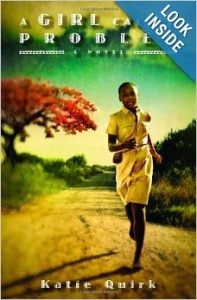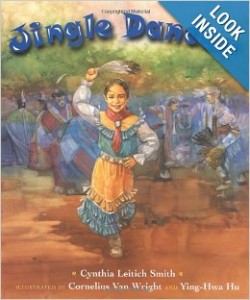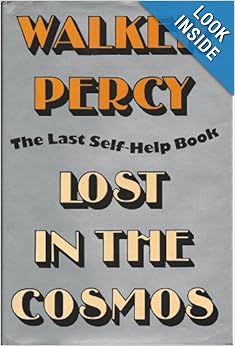This book was an unexpected gift. I was in the mood for something nonfiction, inspirational, and thought-provoking. And Mr. Heuertz delivered.
 I know nothing at all about Word Made Flesh community, the community that Mr. Heuertz lived in and among and from which he takes his examples in the book. I know nothing of the jargon that Mr. Heuertz uses in his book: “contemplative activism”, “transitional awakening” and “prophetic community”. I am skeptical about the pantheon of heroes of whom the author has pictures pinned up in his office: Gandhi, Romero (who?), Che (?), Mother Teresa and Bob Marley(?). I got lost in the “progressive” new monasticism that Mr. Heuertz espouses and the sometimes dense, esoteric language he uses to describe his insights into community. I don’t think the author and I are on the same page, theologically speaking.
I know nothing at all about Word Made Flesh community, the community that Mr. Heuertz lived in and among and from which he takes his examples in the book. I know nothing of the jargon that Mr. Heuertz uses in his book: “contemplative activism”, “transitional awakening” and “prophetic community”. I am skeptical about the pantheon of heroes of whom the author has pictures pinned up in his office: Gandhi, Romero (who?), Che (?), Mother Teresa and Bob Marley(?). I got lost in the “progressive” new monasticism that Mr. Heuertz espouses and the sometimes dense, esoteric language he uses to describe his insights into community. I don’t think the author and I are on the same page, theologically speaking.
And yet . . . Mr. Heuertz has deep experiential understanding and wisdom about how Christians can and should live in community. I found a lot to think about and mull over, especially in relation to my church family, my immediate family and my homeschool co-op family, all of which make up the community where God has placed me. The chapters in the book talk about eleven “unexpected gifts” of living in community: failure, doubt, insulation, isolation, transition, the unknown self, betrayal, incompatibility, ingratitude, grief, and restlessness. All of these would seem to be issues and problems rather than gifts, but as we allow God to redeem our failures, doubts, griefs, and restlessness, we can receive these things as gifts to spur us on to greater growth and deeper relationship with Him and with others.
Failure: ” . . . let restoration become a journey toward brokenness. For in brokenness, our woundedness is best addressed, our fears are calmed, our shame is lifted, and love is extended.”
Doubt: ” . . . very real times of doubt lead both of us to places of lament—the grieving of the things that are fundamentally broken in the world—even as we simultaneously hope for more of God’s justice, presence and nearness. . . . in our community, when one of us has been down or experiencing doubt, we have found that the faith of those around us helps carry us.”
Insulation: “Our communities won’t always be able to offer us everything we need, nor will we be able to give back all that they need from us. . . That’s often when we need to step back, to refocus.”
Isolation: “The exclusion of the weak and insignificant, the seemingly useless people, from a Christian community, may actually mean the exclusion of Christ.” ~Dietrich Bonhoeffer
Transition (or change): “Avoiding blame, not picking sides, speaking honorably of the communities we leave or the people who transition from our communities are all parts of a bigger process–one that must also include space for grieving and room for celebrating.”
The Unknown Self: I must admit that this chapter about self-image and identity didn’t speak to me, and I didn’t understand what the author was trying to say. Self-discovery is found in self-denial which allows us to be free and whole people? Or something.
Betrayal A powerful meditation on betrayal and forgiveness. “Our response to betrayal can be a powerful force, setting our life trajectories toward grace or bitterness.”
Incompatibility: Subtitled “When Together Is Too Close,” this chapter explores the difficulties and blessings of incompatibility or the flip-side of too much “chemistry” between people who need to maintain some emotional and physical distance (members of the opposite sex, for instance). I’m not sure I agreed with Mr. Heuertz in his simplistic solution, that we all just act like mature people and get along but not misbehave. I think it is more complicated than that and that there is a place for drawing “artificial” boundaries, such as two people of the opposite sex not being alone together or avoiding intimate communication with people who are immature or abrasive. Heuertz seems to sy that we should just exercise common sense and grow up.
Ingratitude: More powerful stuff. “Many of us hadn’t considered the ways in which ingratitude had created subtle distances among us–forgetting to say thank you when someone stayed late, pitched in, or helped complete a big project, or merely thanking each other for common courtesies such as opening a door. Sometimes not saying thank you when a meal tab was covered by a community member or failing to express gratitude for well-prepared meetings caused some of us to judge each other as entitled or ungrateful.”
Grief: “Grief must be accepted. We can’t control it; we have to experience the depths of grief. In a contemplative posture, we are able to receive the pain as a gift filled with healing and lament.”
Restlessness: I think I liked this chapter best of all because it spoke to my temptation to devalue and become tired of the daily-ness of my life and my calling as a mother. “Most of real life consists of living in the ordinary, in-between times, the space and pauses filled with monotony. Most of real life is undramatic. The challenge is to be faithful and consistent, ‘praying the work’ when no one is looking or when there’s no recognition of our contributions.”
“Becoming the best versions of ourselves often requires that we stay. Stay when things get hard. Stay when we get bored. Stay when we experience periods of unhappiness. Stay when the excitement wears off.Stay when we don’t like those we’re in community with. Stay when we fail or are betrayed. Stay when we know who we can become if we have courage to be faithful in the undramatic.”
Unexpected Gifts was sent to me free of charge by the publisher, Howard Books, for the purpose of review. I am grateful to them and to the author for the opportunity to review and reflect on the ideas that Mr. Heuertz presents in this testimony of difficulties transformed into gifts.







